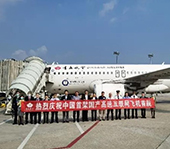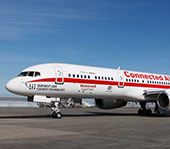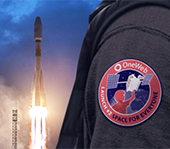An Innovative New Normal
David Flexer of Inflight Motion Pictures once recounted to Life magazine that he was on a transcontinental flight in 1956 when he realised “air travel is the most advanced form of transportation and the most boring.” Flexer later developed the 16mm film system for commercial aircraft, a launchpad for a meteoric change in our industry. At the turn of the century the focus seemed mainly on quantity as airlines raced to offer more content than their competitors. In 2020, the Coronavirus pandemic has given us the opportunity to reconsider our industry and the role we play and readdress the decades old question – just how boring is it?
It was the turn of the century when Boeing launched Connexion, the first high speed internet connection inflight. In the two decades since, many airlines began to offer internet connectivity but often it feels like a slow wave from the first row of the aircraft to the last. In a 2019 Sky High Economics Report the industry was warned of an “immediate need” to innovate. In our region, they reminded us that this next decade will see “the first truly digitally native generation become the largest group of air passengers of over 450 million.” The report further explained that the digital disruption we have seen on the ground is now “driving expectations of the inflight experience and redefining attitudes to airline loyalty.” When we examine what exactly these expectations are, it is helpful to consider a 2019 Content Ratings Benchmarks report where Nielsen found that Live TV continues to be the largest contributor to time spent on media content on the ground. Further, a study commissioned by the BBC Global News that same year confirmed that 62 percent of passengers were more likely to choose an airline if it had Live TV with a third willing to pay up to 20 percent more for the privilege.
If we know the growing expectation of our customers and we have the technology, what is preventing airlines and content providers from the innovation that David Flexer demanded back in 1956? The answer is simple: cost.
Increasingly our client experience has been that airlines are fully aware of their passenger’s expectations. We’ve all delayed boarding a plane as long as possible in the hope of watching the last minutes of a game, catching the result of an election or witnessing breaking news. We’ve cancelled flights when our team made the final and we have relied on the kindness of pilots and cabin crew to keep us updated on the score. So, while the world stood still in 2020, we listened to the market and put the finishing touches on IIM+. This innovative and patented signalling server technology allows multicast streaming onboard without the need to install additional hardware or software. It is convenient, affordable and flexible. IIM+ will enable airlines to meet this “immediate need” to innovate, revolutionising Live TV inflight at an extraordinary bandwidth saving of 75 to 90 percent. With IIM+ Live TV has potentially become the most economically viable option to entertain passengers.
The Coronavirus pandemic has been devastating for the industry but history will define it as an impetus for change. When the skies re-open, passengers will notice which airlines took the time to reinvent themselves, to rise above their competition and to entertain like never before – “boring” cannot be the new normal. While 2020 has taken so much from so many it is important to look forward. In 2021 Tokyo will finally host their long-awaited Olympics and Paralympics, Roger Federer or Rafael Nadal may play their last Grand Slam and England may finally win the Euro. This year has also seen us tune into live news like never before, to monitor travel updates, check the market and tune in to watch world leaders speak. This momentum, these habits, will not stop when the skies reopen, passengers will not be content to miss anything, anymore. Our vision is for IIM+ to enable new carriers to launch with Live TV as their primary entertainment medium – less hardware, less fuel, less cost and less environmental impact. Existing carriers can meet this Live TV demand with savings, not costs. Trans-Tasman flights could focus on rugby, cricket and live news while their Northern Hemisphere counterparts tune in to football and tennis. Superbowl parties take to the skies. Programming with IIM+ is destination specific and more relevant than ever before. Generation Z passengers can enjoy their Live TV on their personal devices while the Millennials may continue to enjoy in seat convenience. Live TV was seen as expendable at the beginning of the shutdowns but now it should be seen as the solution to a healthy, zero-touch, dynamic and exciting inflight experience that could revolutionize an industry and satisfy consumer demand simultaneously.
The changes we have seen in 2020 will have repercussions for years to come – it is only with innovation and adaptation that we will survive and thrive. IIM+ provides a convenient, affordable and flexible Live TV solution for airlines. The game has changed and with IIM+ the new normal will be far from boring.









